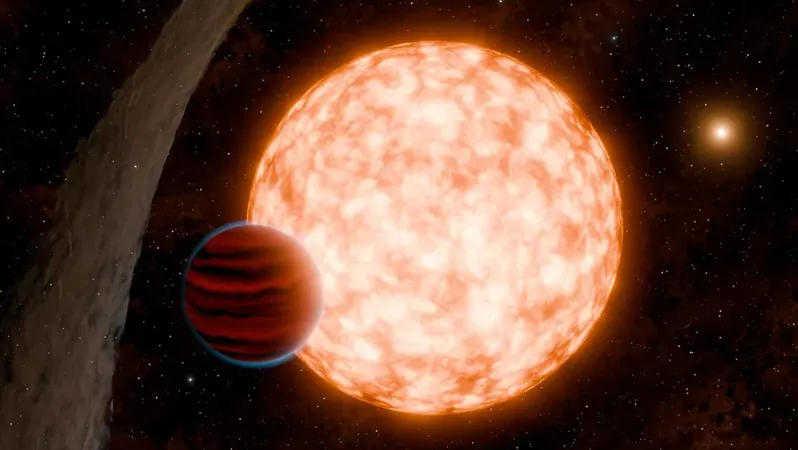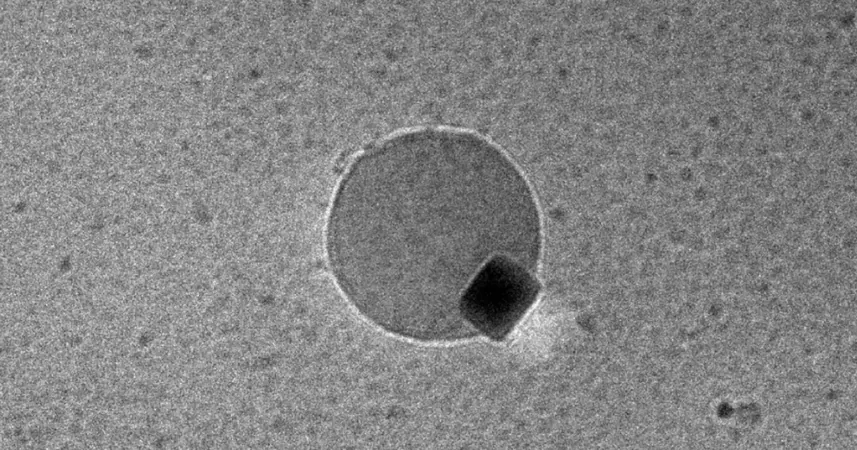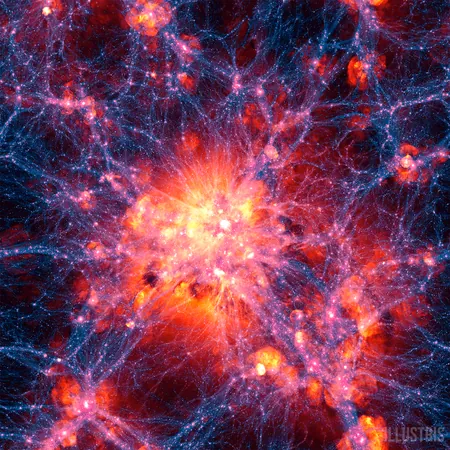
Astronomers Discover Fast-Forming Alien Planet, Challenging Planetary Formation Theories!
2024-11-22
Author: Benjamin
In a groundbreaking discovery that has sent ripples through the astronomical community, a team of astronomers has identified a rapidly forming planet located around a young star. Remarkably, this planetary newborn achieved its full mass in just three million years—stunningly quick when considering the cosmic timeline, as Earth took approximately 10 to 20 million years to form.
Dubbed IRAS 04125+2902 b, or TIDYE-1b, this exoplanet boasts a mass estimated to be 10 to 20 times that of Earth and is one of the youngest planets ever detected beyond our solar system. It orbits within a protoplanetary disk—a dense zone rich with gas and dust that serves as the building blocks for planetary bodies. This enhanced understanding could lead to significant shifts in current theories regarding how quickly planets can form.
The host star of this newly discovered planet is projected to develop into an orange dwarf, which is characterized by being cooler and less massive than our sun. Located about 520 light-years away in the Milky Way galaxy, this star is approximately 70% the mass of our sun and has about half its luminosity.
“This discovery reveals that cohesive planet formation can occur within three million years,” stated Madyson Barber, a physics and astronomy graduate student at the University of North Carolina at Chapel Hill and lead author of the study published in Nature. “It raises intriguing questions about the time it takes for different types of planets to form.”
Co-author Andrew Mann, an astrophysicist at UNC, elaborated on the complexities of planetary formation, saying, “We understand that giant planets need to accrue enough gas before their disk dissipates, which generally takes five to ten million years. But this leads to critical questions—do planets form in just one million years, five, or maybe ten? This discovery hints at a faster process.”
IRAS 04125+2902 b completes its orbit every 8.8 days at a distance roughly one-fifth that between Mercury and the sun. With a diameter about 11 times that of Earth but less dense, its exact chemical composition remains unknown. Researchers theorize that the planet may have initially formed at a greater distance from its star before migrating inward, which is a fascinating aspect given the challenges associated with creating large planets close to their stellar hosts due to rapid disk dissipation.
Utilizing the “transit” method, the researchers monitored a reduction in the brightness of the host star that occurs when the planet crosses its line of sight. This method was made possible through observations from NASA's Transiting Exoplanet Survey Satellite (TESS).
Interestingly, despite the initial skepticism surrounding the ability to detect such a young transiting planet—due to the potential obstructions posed by the dense protoplanetary disk—Barber noted a peculiar warping in the outer disk that created a clear observation path.
As the understanding of planetary systems continues to unfold, this discovery showcases not just the evolving picture of exoplanet formation but also the advanced capabilities of modern astronomical tools. The potential implications for our understanding of planetary formation could reshape how scientists approach the study of worlds both near and far, perhaps even including insights into how our own solar system came to be.
Stay tuned as this story develops—what other secrets lie hidden among the stars?









 Brasil (PT)
Brasil (PT)
 Canada (EN)
Canada (EN)
 Chile (ES)
Chile (ES)
 España (ES)
España (ES)
 France (FR)
France (FR)
 Hong Kong (EN)
Hong Kong (EN)
 Italia (IT)
Italia (IT)
 日本 (JA)
日本 (JA)
 Magyarország (HU)
Magyarország (HU)
 Norge (NO)
Norge (NO)
 Polska (PL)
Polska (PL)
 Schweiz (DE)
Schweiz (DE)
 Singapore (EN)
Singapore (EN)
 Sverige (SV)
Sverige (SV)
 Suomi (FI)
Suomi (FI)
 Türkiye (TR)
Türkiye (TR)